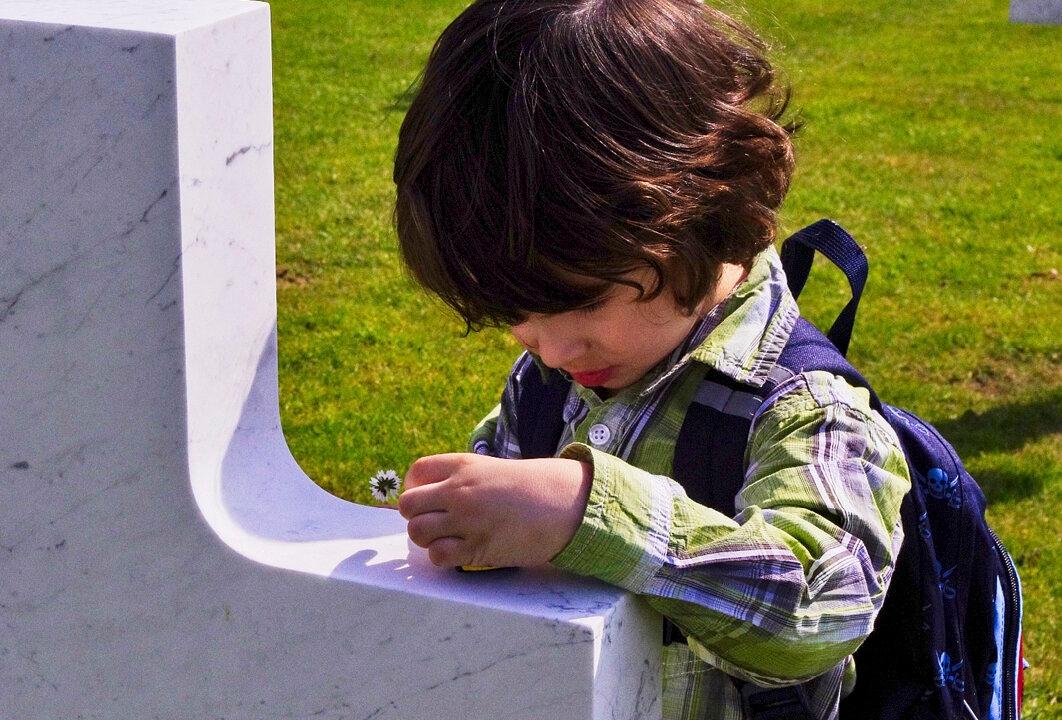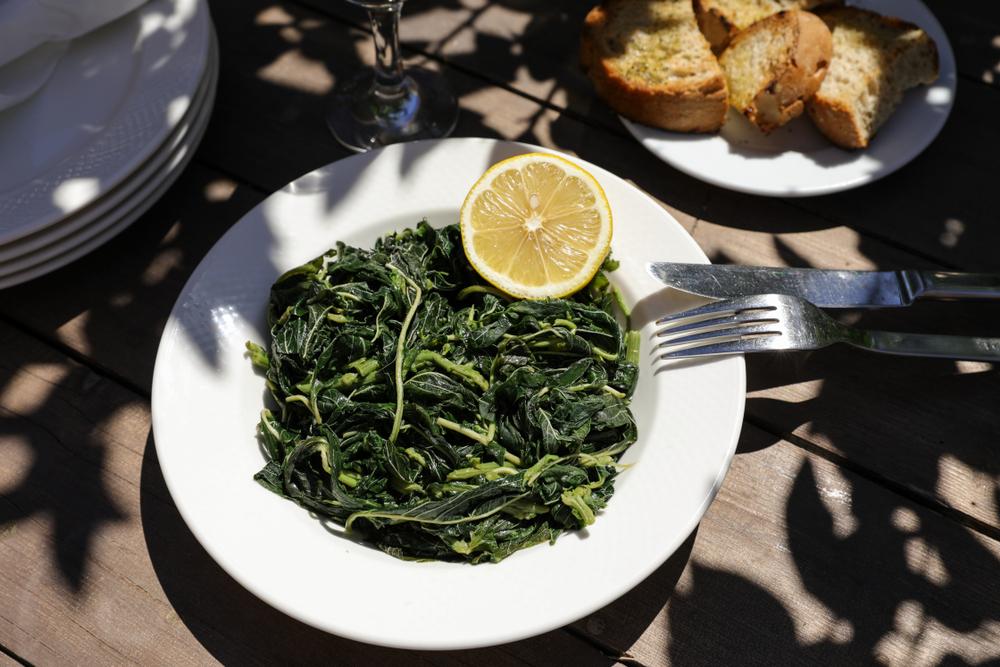He kneels to pluck a tiny chamomile flower. I don’t know what he’s thinking, but his sweet face is focused and grave. His darling little fingers go on plucking one, two, three white-and-yellow dots from the jade-green grass. Then, he marches to the somber chalk guardians of the field, those disciplined whitewashed monuments that mark the last halt for so many brave men and places the flowers on the arm of a cross. He stops, and I read the words engraved on the front of the headstone:
“Here rests in honored glory
an American soldier
known but to God.”





